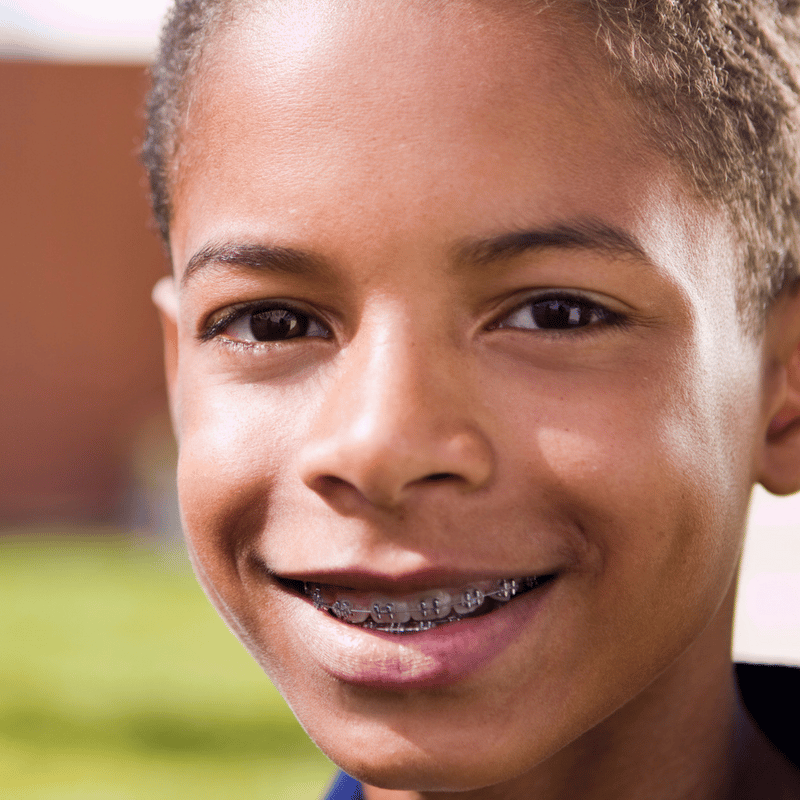Your Child’s Dental Development: From Baby Teeth to Permanent Teeth
Kids grow up too fast. One minute they’re tiny babies and the next they’re adventurous toddlers. You blink again and you’re dropping them off at their first day of school. But something very important happens between those milestones that can have lasting impacts on your child’s smile well into adulthood.
Beginning With Baby Teeth
Baby teeth, also known as primary or milk teeth, first start to erupt around six months of age and typically come in on the bottom first.
Typically, children gain about four new baby teeth for every six months of life. By the time your child is two and a half to three, they should have all 20 of their baby teeth. These teeth come in starting with the center and working their way around the arch of the mouth.
Transitioning Teeth
Children typically start to lose their teeth around age six or seven and it’s normally in the same order that their teeth come in, meaning those lower front teeth are usually the first to go. Some children may start to feel their teeth wiggle as early as four while some may not lose a tooth until closer to eight.
A baby tooth doesn’t typically come down with a case of the wiggles until the permanent tooth is almost ready to descend. However, sometimes a permanent tooth can take a little extra time to erupt. If your child loses a baby tooth and the permanent tooth doesn’t erupt within three months, your dentist can check the tooth’s progress and, if needed, a plastic place-holder called a spacer can be put in until the permanent tooth is ready
While it’s okay for your kiddo to wiggle a loose tooth, make sure you don’t let them yank it out before it’s ready. And please, don’t let them pull it out with the help of a drone or other YouTube trend. Forcefully pulling out the tooth can break the root and lead to an infection, so it’s best to let it fall out on its own.Most kids are excited to get their big kid teeth, but if you have a child who worries that losing a tooth might be painful, let them know not to worry. The calmer you are about this, the easier it will be for your child to relax.
Most kids are excited to get their big kid teeth, but if you have a child who worries that losing a tooth might be painful, let them know not to worry. The calmer you are about this, the easier it will be for your child to relax.
Is that normal?
A number of other factors can influence your child’s transition from primary to permanent teeth, but it’s important to remember that some children develop faster or slower than their peers. You’ll want to bring your child in for an initial appointment — we call them happy visits — with the dentist by their first birthday so your child can get used to the office and so your dentist can keep an eye on their developing mouths. In general, girls tend to develop more quickly than boys.
If your child loses a tooth before the age of four, make an appointment to see your dentist to make sure there aren’t signs of trauma or decay. Likewise, the American Association of Orthodontists recommends children see their orthodontist for a consultation at the age of seven. Even if your child hasn’t started to lose their teeth by the age of seven, it’s still a good idea to go in to see an orthodontist for x-rays to get a head start on evaluating their oral development and future orthodontic needs.
Other Oddities
Sometimes the reason your child hasn’t lost their baby tooth yet is because they simply don’t have an adult tooth at all. When a permanent tooth fails to develop, it’s called congenitally missing teeth or hypodontia. It’s one of the most common dental abnormalities and about 20% of all adults are missing at least one tooth! Wisdom teeth account for most of these missing teeth, followed by the second premolars, which are commonly removed for orthodontic treatment as a way to combat crowding.
But hypodontia isn’t the only abnormality your child’s teeth may present. Its opposite – hyperdontia – is the presence of extra teeth in the mouth that occurs in about 2% of the population. These bonus teeth are also known as supernumerary teeth and can grow anywhere in the arch. While your child may have extra permanent teeth, it’s far more common for these to be additional primary teeth and occurs more commonly in girls. These extra teeth come in all shapes and sizes and are most commonly behind or around your incisors in the front of the mouth. Not to worry, these teeth don’t typically cause pain or discomfort and they can be easily extracted by your child’s dentist.
Have you noticed little, serrated bumps on your child’s brand new front teeth? While they may look concerning, these little ridges on your child’s teeth – called mamelons – are totally normal! Aside from looking a little strange, there’s nothing to worry about as these bumps are thin and will wear down with use in patients with a correct bite. If your child has an open bite (caused by thumb sucking, for example), these bumps can remain well into adulthood.
Taking Care of Permanent Teeth

Supervise their brushing and flossing and help them get the hang of these healthy habits as they go through this transition. Make sure your kiddos understand that their new grown-up teeth are the only ones they get, so it’s important to take good care of them.
Brushing for two minutes, twice a day with fluoride toothpaste combined with flossing once a day and a healthy diet should do the trick to keep their mouths happy and healthy.
But what if your child’s teeth are coming in yellow? Not to worry, these brand new permanent teeth aren’t yellow, they just look that way compared to the baby teeth surrounding them. Primary teeth don’t have as much dentin – the strong, yellow-hued core of teeth – as their permanent counterparts. The contrast will seem initially very stark, but once your child loses the rest of their baby teeth you won’t even be able to notice a difference! The nerve canals in these brand new permanent teeth are larger, and as they age the canals slowly calcify and the tooth appears to lighten.
So what do I do with all these baby teeth?
What you do with your child’s teeth is up to you. Many parents keep their children’s baby teeth in a keepsake box or even a plastic baggie. Some parents even throw them away. Recently, scientists have figured out how to preserve baby teeth for stem cells in case your child develops a medical need for them later.
No matter what you choose to do with those teeth, making sure your child has the tools they need to keep their mouth happy and healthy is all that really matters. And if you ever do have a concern about your child’s teeth, set up an appointment with us. We’re happy to help!
